How the Electric Guitar is Made
Shaping the neck and body
The curved surface of the neck is shaped by hand
After the neck has been machine-processed to a certain degree, the subtle curve on the underside is shaped by hand. A gauge is pressed to the area of the neck around the 1st and 12th frets to check for a certain curve, and the neck is shaved down as though the luthier is connecting two points on a line.
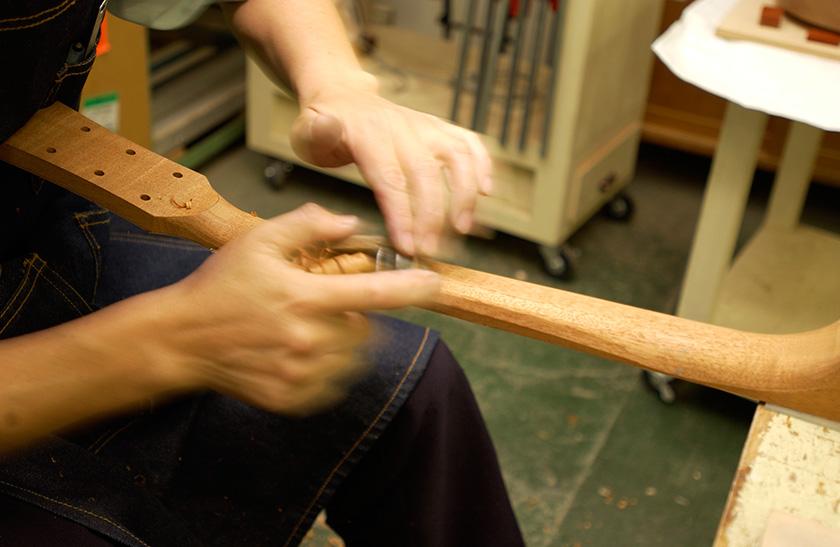
Shaving the curve on the underside of the neck
The planes are made by hand!
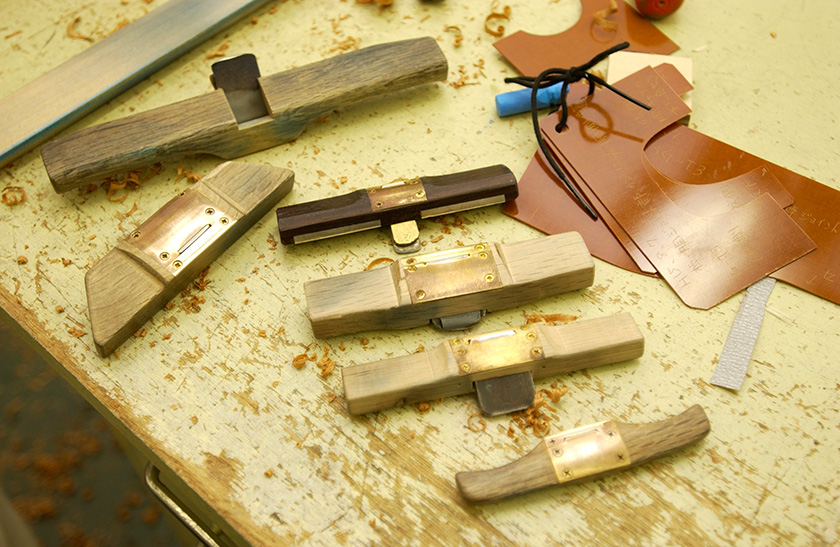
Handmade planes; on the bottom right is the gauge used to check the shape of the guitar
It takes around 30 minutes to achieve an approximate shape for the part of the mahogany neck the guitarist will ultimately hold. Harder wood like maple takes longer. Commercially available planes will not fit the guitar, so the luthier uses a steel blade to create them by hand. A luthier will typically have many curved and flat planes that he or she can choose from depending on the situation.
A space is carved on the underside of the body
Next, a space for the electric circuitry is carved on the underside of the body. For mass produced instruments a machine is programmed to do this automatically. For special orders however, this is done by hand. Of course, this does not mean a luthier does not use tools. The luthier prepares a guideline for the shape he or she wants to carve in the underside of the board the body is resting on. While working, he or she then uses a pin to trace this shape from below, then follows this guideline as he or she shaves the body from above with a blade. The luthier adjusts the depth of his or her carving by the millimeter and the shaves around the body on the surface, finally forming the shape.
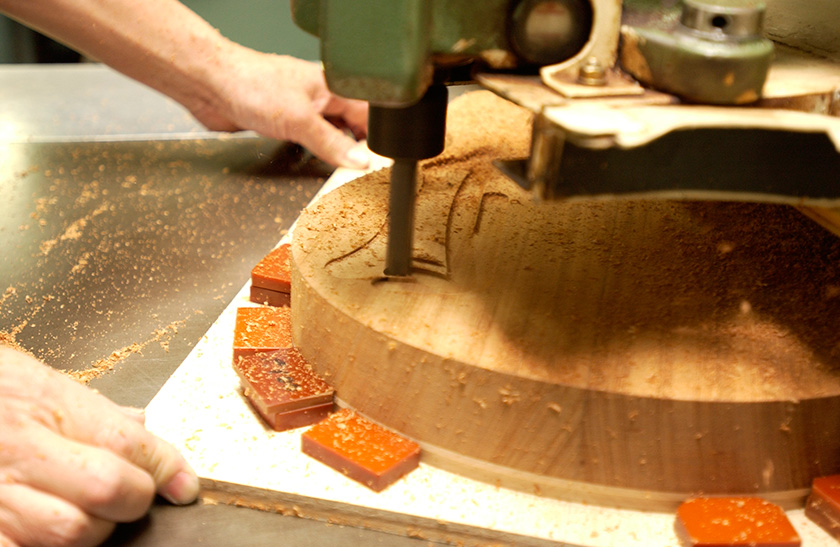
A space is carved on the underside of the body for the electric circuitry
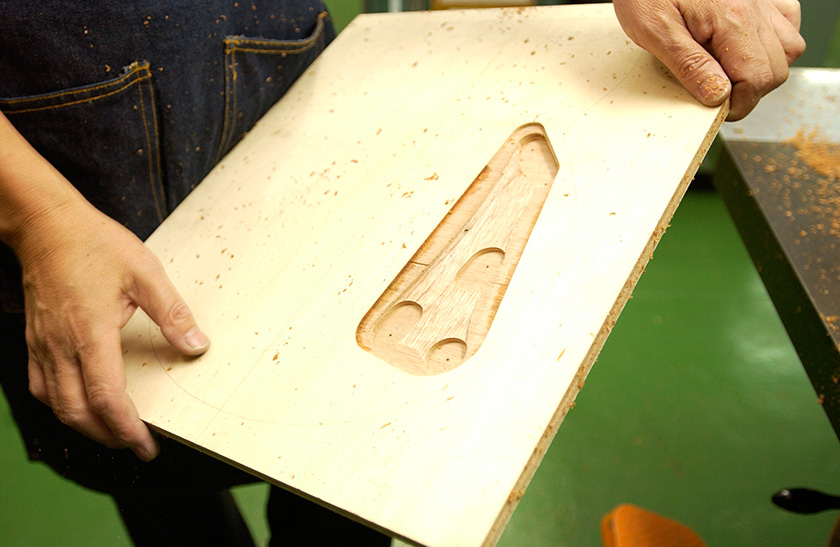
The guideline read by the machine
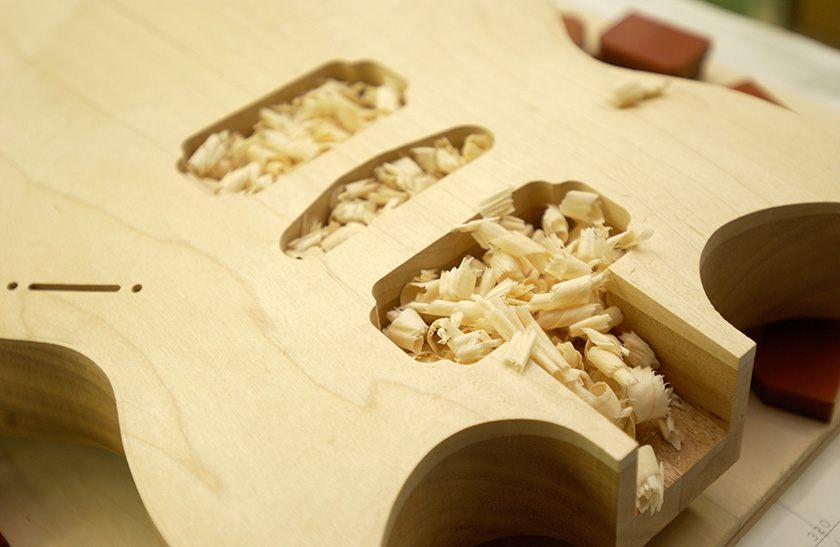
The luthier finally shaves the area around the surface by hand
There are three ways to connect the body and neck
There are three ways to connect the body and neck: set neck (where the neck is completely inserted into the body and then glued in place), bolt-on neck (where the neck is bolted in place), and neck-through (where there is no joint as the body and neck are formed from a single piece of wood). Bolt-on necks are easy to manufacture and offer a benefit to the end user as the neck can be replaced if it is broken. The set neck and neck-through methods both require a more careful manufacturing process, but offer truer sound and better sustain (the amount of time a sound continues to be heard).
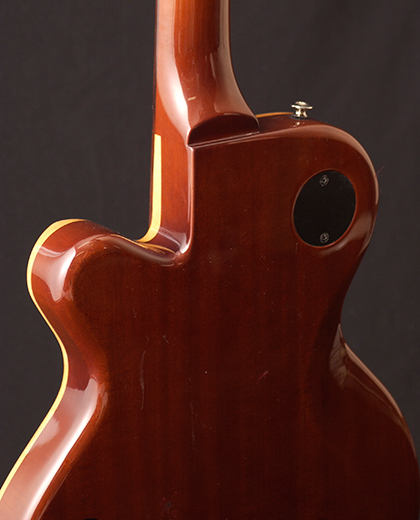
Set neck, where the neck and body are glued together
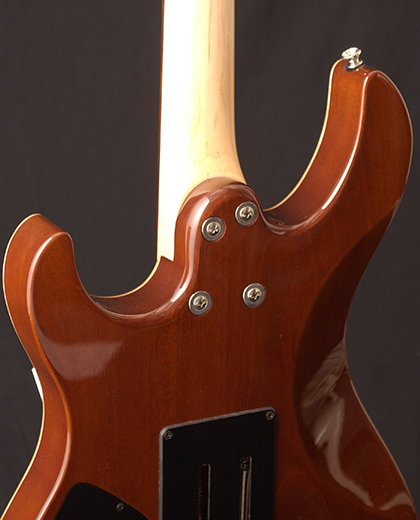
Bolt-on neck, which allows the neck to be replaced if broken

Neck-through, where the neck and body are a single piece
Musical Instrument Guide:Electric Guitar Contents
Structure
How to Play
How the Instrument is Made
Choosing an Instrument
Care and Maintenance
Trivia
- Slide guitar playing may have been invented in a bar
- Feedback:Great for guitar playing! Not so great for karaoke...
- What is the difference between an electric guitar and electric acoustic guitar?
- Is there a way to eliminate the noise heard when plugged into an amplifier?
- Whole note down tuning for deeper bass
